The Lenovo Tab P11 Pro (Gen 2) is the ideal mid-range tablet for movie and TV show lovers on the move. With a stunning OLED display and impressive metrics in both color depth and luminescence, I came away from this screen never wanting to look at the Apple iPad again. Considering Lenovo’s competitive pricing on the tablet and the Precision Pen stylus that can be purchased alongside it, this level of beauty would cost a fortune on any Apple product. But unfortunately, something can look good yet miss the mark in other key categories.
Underwhelming battery life and performance are its greatest misses, but worst of all, it’s a software nightmare that’s trapped on Android 12 nearly two years after that update launched, so don’t expect extensive Android support if you buy into this thing. Yet even with these flaws, does Lenovo manage to dominate the mid-range tablet market and solidify the P11 Pro as one of the best tablets out there? Keep reading to find out!
Lenovo Tab P11 Pro (Gen 2) price and configurations
Our model of the Lenovo Tab P11 Pro (Gen 2) comes in Storm Grey and is built with a MediaTek Kompanio1300T processor, 6GB of RAM, 128GB of storage and a gorgeous 11.2-inch 2,560 x 1,536-pixel OLED glossy display. It costs $429.99 and is available on Lenovo’s website. This model does not include a Lenovo Precision Pen, with the first, second and third models costing $51.99, $64.99 and $69.99 respectively.
While this is the only available model for the P11 Pro, the base P11 is available on Lenovo’s website for $259.99 with a MediaTek Helio G99 processor, 4GB of RAM, 64GB of storage and a 11.5-inch 2000 x 1200 IPS display. And unlike the Pro, it comes with a Lenovo Precision Pen 2.
Lenovo Tab P11 Pro (Gen 2) design
The P11 Pro’s simple back features a divided line that separates two similar tones of Storm Gray, but it’s somehow attractive. A silver Lenovo logo sits at the top left, filling so little space that you can’t help but bask in the reflectivity of its aluminum back.
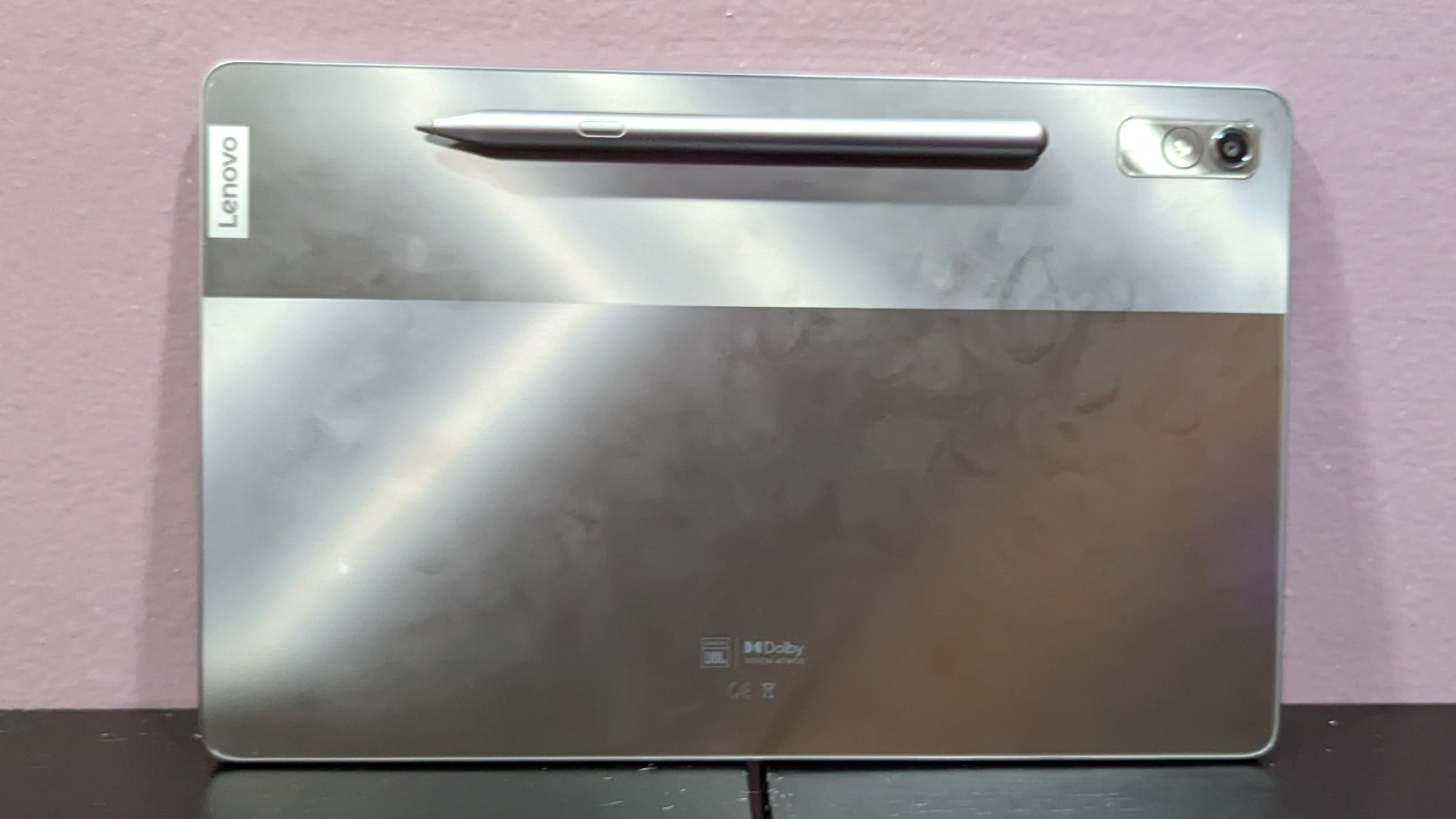
While I prefer colorful electronics, Lenovo did a good job ensuring it’s not completely devoid of personality, although the camera is pretty boring. Its cheap looking glass casing and identical hue to the rest of the body results in gray overload. I get that Lenovo had a (very gray) vision for this tablet, but it could at least be a different hue. While the sides are still gray, they’re at least brighter, making it stand out from the rest of the tablet by channeling shades of silver in the right light.
The P11 Pro weighs 1.05 pounds and measures at 10.38 x 6.56 x 0.26 inches. In comparison, the Apple iPad 10.9-inch Gen 10 (1.05 pounds, 9.78 x 7.07 x 0.28 inches) is very similar in weight and size, while the Lenovo Yoga Tab 11 (1.4 pounds, 10.1 x 6.7 x .31 inches) is heavier yet smaller, and the OnePlus Pad (1.02 pounds, 10.1 x 7.45 x 0.25 inches) is lighter but larger.
Lenovo Tab P11 Pro (Gen 2) display
The P11 Pro is built with an 11.2-inch, 2,560 x 1,536-pixel OLED glossy display, so I was beyond excited to jump right into the best-looking modern shows. But when I started watching The Lord of the Rings: The Rings of Power, that excitement quickly shifted to disgust.
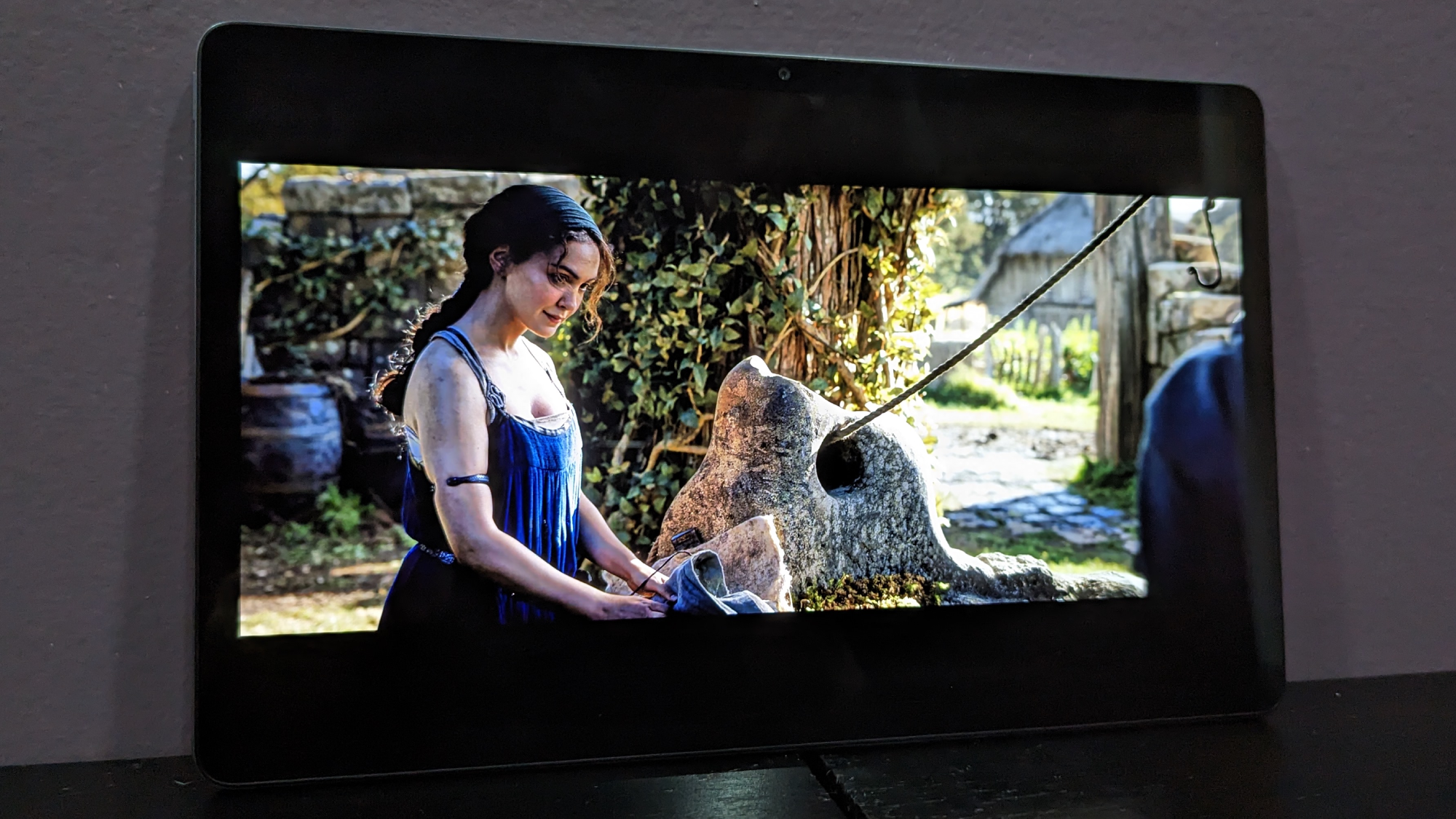
All too familiar with the myriad of ridiculous “enhancements” that plague modern screens, I immediately knew the culprit: Artificial sharpness. But the question was where it was coming from, and after sifting through some settings, I realized that the Natural color setting was the problem. Come on Lenovo, it’s pretty ironic to add artificial sharpening to a setting called “Natural.”
In the company’s defense, I set the screen to Natural when first launching the tablet, as I assumed it would channel a warmer image without all of that extra nonsense. I quickly swapped back to Bright, which is the default setting, and jumped right back into The Lord of the Rings: The Rings of Power.
Once again, it took no time for me to be put off by another issue: Artificial color depth. It’s as if Lenovo turned the vividness up to maximum just to sell the appeal of its OLED display, but holy moly, it looks bad. You have an actual OLED Lenovo, you don’t need to pull these silly tricks.
Every character’s hair looked matted, and the uncanny range in oversaturated color between people’s faces, their clothing and the environment around them was jarring. At one point it looked like Galadriel’s blonde hair was green! Worst of all, the color would adapt in real time, causing certain hues to suddenly shift mid-scene. Why would anyone want to watch anything like this and why is it the default setting?
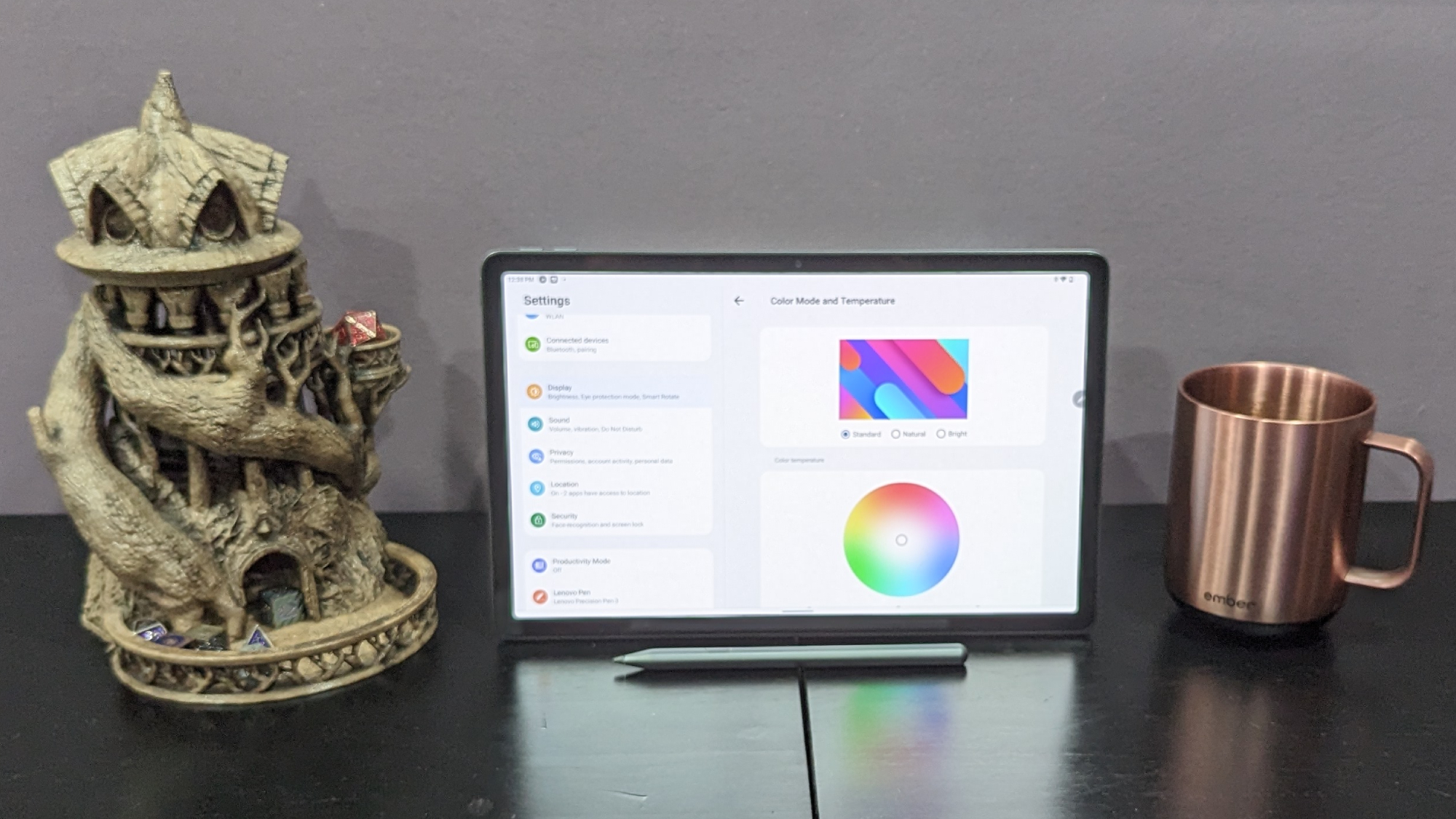
I changed from Bright to Standard and finally—a warm, naturally appearing OLED screen boasting an authentic color range without all the misleading bells and whistles. There’s no world in which this shouldn’t be the default option, and when I did finally make the change, I fell in love with the Tab P11’s crisp 2.5K display presenting a gorgeous array of vivid colors.
As Galadriel contemplated her fate aboard a vessel to Numenor, the gorgeous inky black sea in contrast against a flock of white doves was the perfect moment to illustrate the lovely range of color built into the OLED display. When a holy light parted the dark clouds, my eyes were absorbed by the screen.
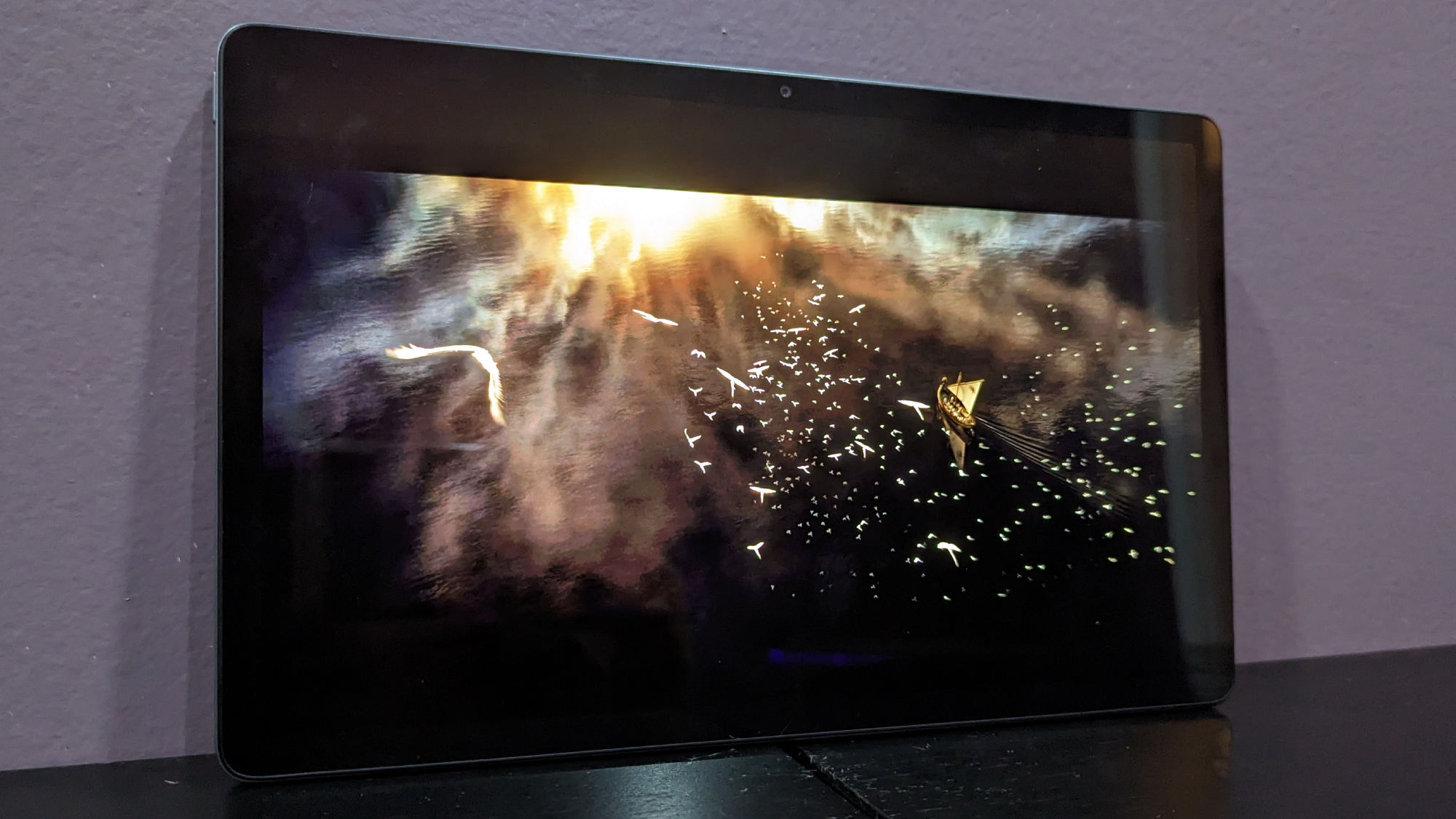
We measured the P11 Pro’s display using a colorimeter and it reproduced 129.6% of the DCI-P3 color gamut on the Bright setting. It also hit 118.2% on the Natural setting, which you shouldn’t use under any circumstances. This is vastly superior to competitors like the iPad Gen 10 (72%) and OnePlus Pad (79%).
The P11 Pro’s luminescence was good but not quite as phenomenal, managing an average of 416 nits of brightness on the default settings. It did go as high as 560 nits of brightness with Adaptive Brightness on when pointing a flashlight directly at the screen, but considering that’s a pretty extreme use case, its default nits were lower than the iPad Gen 10 (504 nits) and OnePlus Pad (465 nits). It did overshadow the Yoga Tab 11 (368 nits), though.
Lenovo Tab P11 Pro (Gen 2) Lenovo Precision Pen 3
The Lenovo Precision Pen 3 feels great and is only $69.99 on Lenovo’s website, which is significantly cheaper than Apple Pencil (2nd Generation) for $129.99. I opened up the Instant Memo option and started scribbling with thin and thick lines appearing depending on my levels of pressure. I tried to write some kanji and beyond dealing with my abysmal handwriting, it felt smooth to do so.
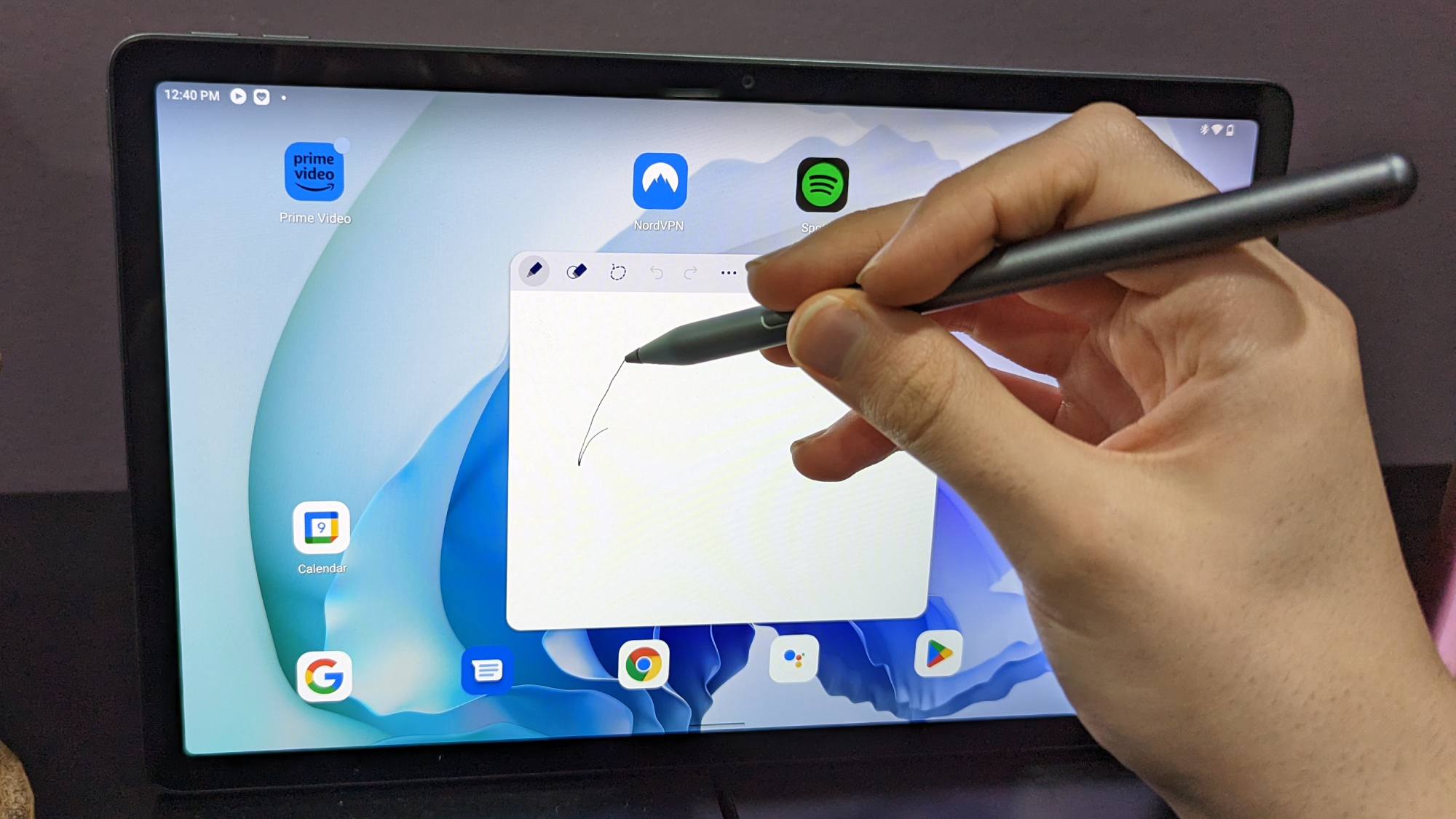
The pen comes with its own little button for quick actions, like double tapping to swap between drawing and erasing. You can also tap once to bring up the menu, and if the screen is asleep, it will open up the tablet. From the menu you can open up a new canvas, take a screenshot, zoom in, swap to laser pointer mode or scan documents. I also tried the feature that turns what you draw into text, but it was a little awkward, as it would constantly interrupt my writing to then turn an unfinished sentence or word into text.
Lenovo Tab P11 Pro (Gen 2) audio
The P11 Pro’s quad speakers are loud and impactful, balancing clear instrumentals and vocals against punchy percussion when listening to music. You won’t need a separate pair of speakers when using it, but you’ll still want the best wireless earbuds or best wireless headphones for private listening sessions.
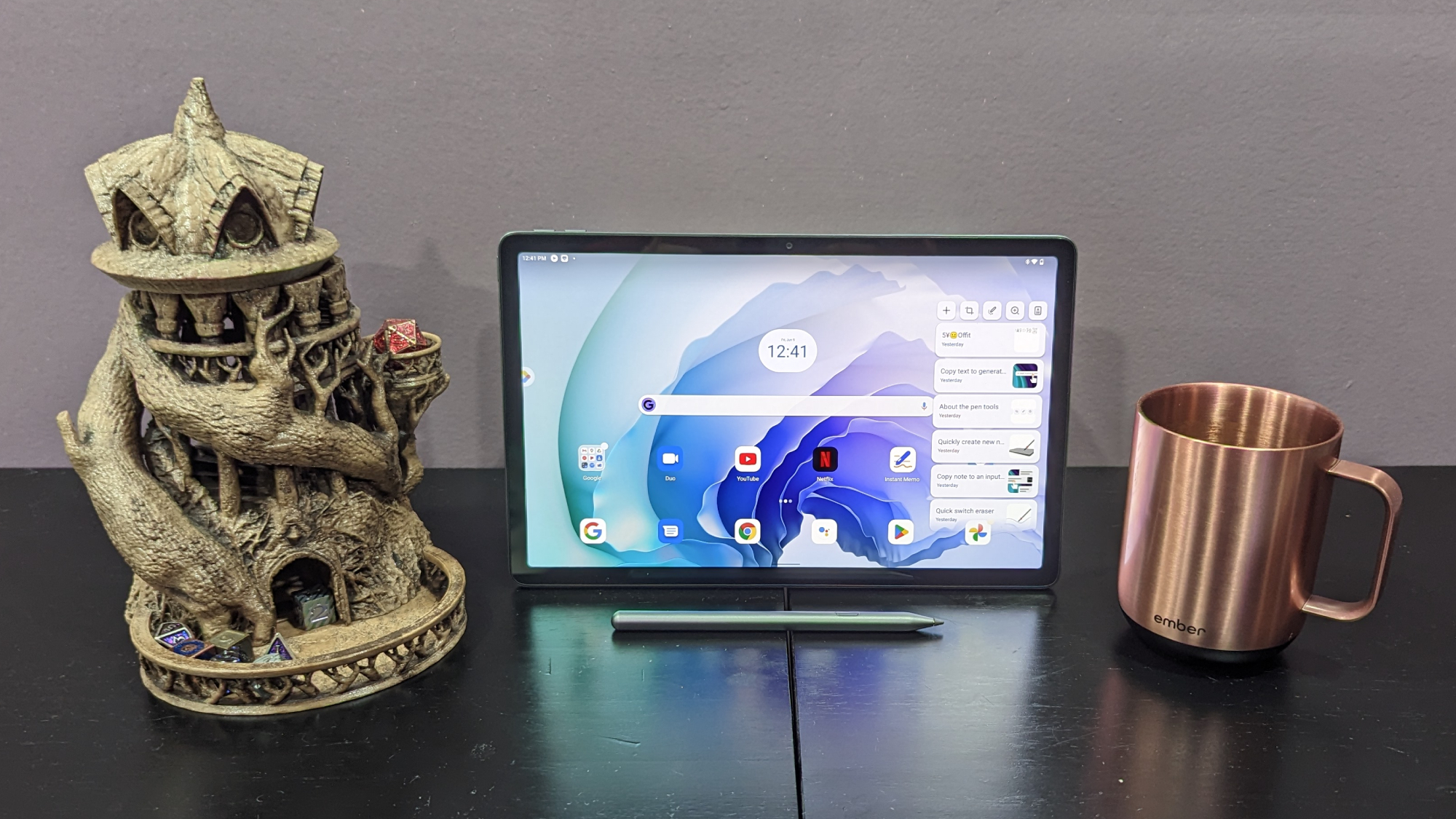
I listened to “Title Track” by Death Cab for Cutie and was impressed by the resounding loudness of the opening lo-fi ensemble. With a hypnotic twist from an underproduced opening to something more whole in the second half, the P11 Pro translated this shift with power. And as the final string of melancholic vocals against the band’s playing escalated in intensity, I could hear every individual hi-hat crash and guitar chord cooperating to channel an engrossing and full sound.
I then listened to “Twin Falls” by Built to Spill where an array of sharp guitar plucks and a wistful barrage of nostalgic lyrics open with a clear intensity. Every individual note, including the gradually intensifying electric guitar halfway through the song, were brought front and center when necessary, packing an audible punch.
Lenovo Tab P11 Pro (Gen 2) performance
The P11 Pro is built with a MediaTek Kompanio1300T processor, 6GB of RAM, and 128GB of storage. It’s far from the strongest of the pack, and while doing some browsing through Google Play and searching through the internet, I noticed the occasional hiccup.
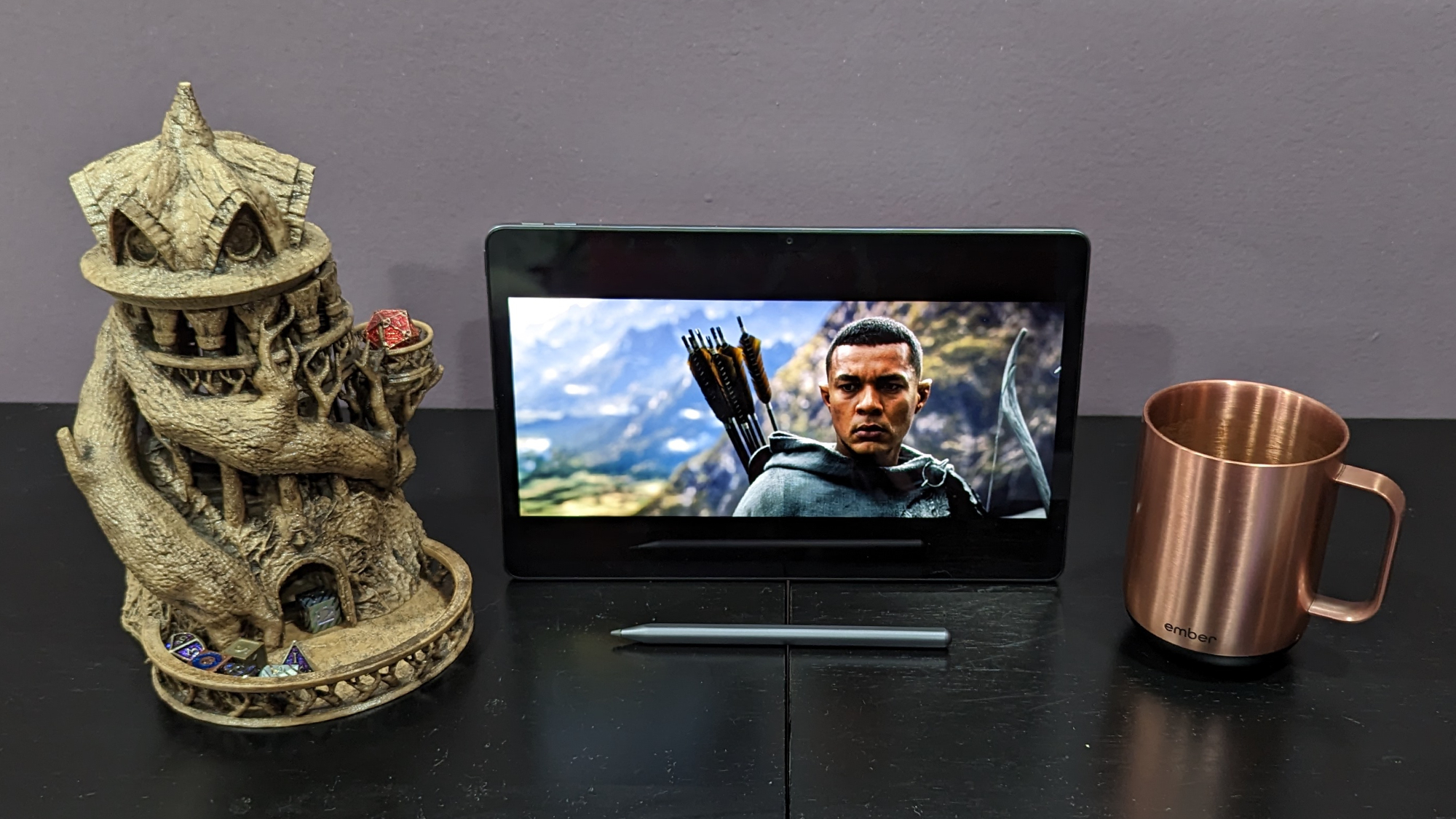
On the Geekbench 5 overall performance test, the P11 Pro’s multi-core score was at an average of 2790, revealing this affordable tablet’s greatest weakness. The iPad Gen 10 (A14 Bionic, 4,040) and OnePlus Pad (MediaTek Dimensity 9000, 3,275) performed quite a bit better than the Lenovo tablet, but the Yoga Tab 11 (MediaTek Helio G905, 1,633) was appropriately in last place.
It didn’t do much better on the 3DMark Wildlife Unlimited benchmark, hitting as low as 26 frames per second (below the 30-fps threshold for playability). This is considerably worse than the iPad Gen 10 (47 fps) and OnePlus Pad (53 fps).
The poor performance continued in the JetStream 2 JavaScript and WebAssembly benchmark suite, as it achieved a dismal score of 63, which is far below what the iPad Gen 10 (215) could muster.
Lenovo Tab P11 Pro (Gen 2) battery life
The P11 Pro’s battery life is a considerable downgrade when compared to its competitors, especially at its default settings. On the Laptop Mag battery life test, it survived a total of 8 hours and 14 minutes. However, turning the display refresh rate down from 120Hz to 60Hz increased its life to 10 hours and 12 minutes. But even with this change, the iPad Gen 10 (10:57), OnePlus Pad (13:31) and Lenovo Yoga Tab 11 (11:46) still lasted longer.
Lenovo Tab P11 Pro (Gen 2) cameras
The P11 Pro’s 8-megapixel front facing camera is fine for taking selfies, channeling the finer details of my face like the pesky hairs above my eyebrows that I’ve yet to pluck, the small bags beneath my eyes, and stray bits of untamed hair at the top of my head. But you’re almost certainly better off taking pictures with your phone, assuming you’re not using something several years old.
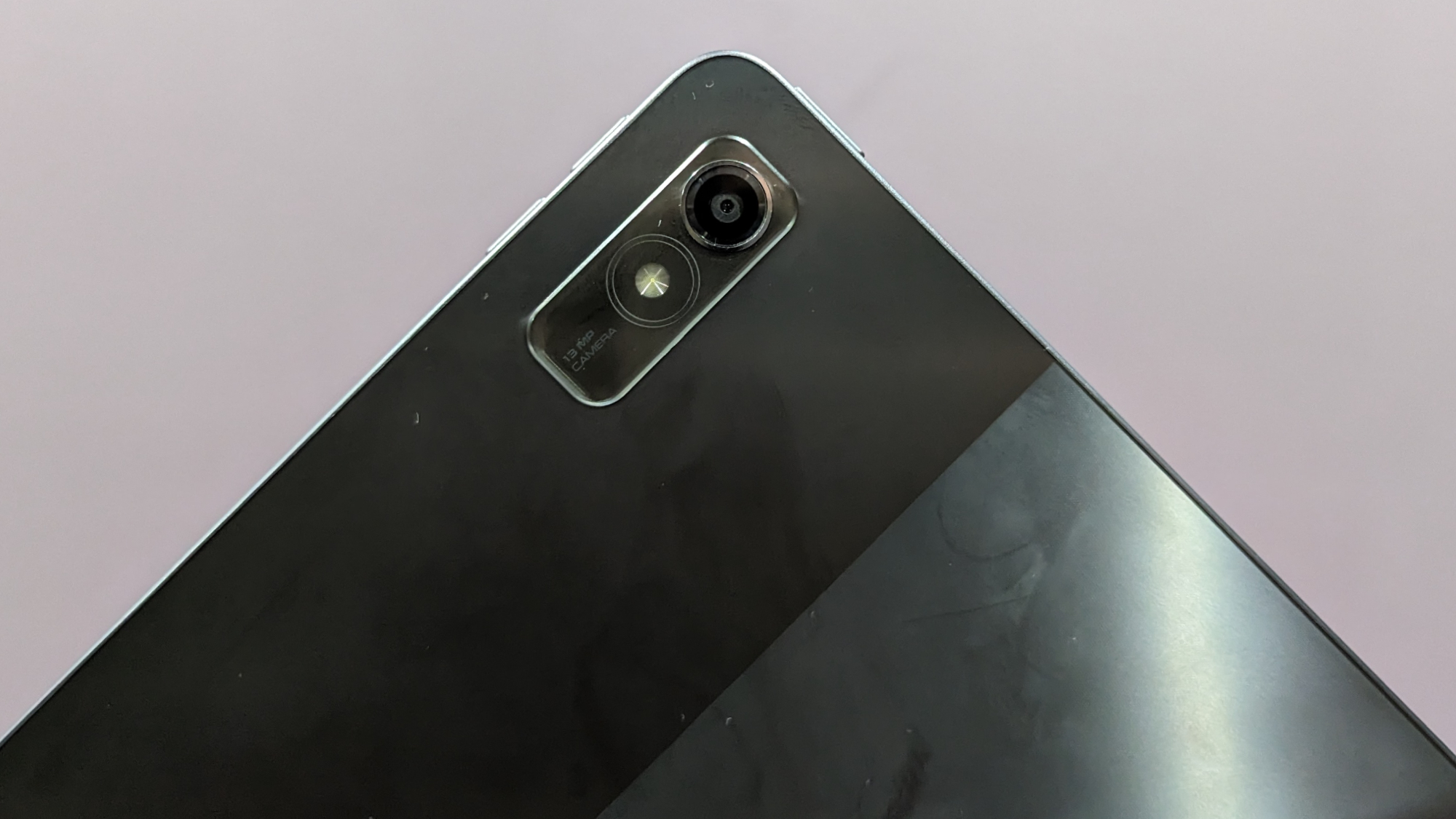
This is especially evident on the P11 Pro’s 13-megapixel back camera, which shifted the text written on a shampoo bottle in my room into something illegible. I took the same photo with my Google Pixel 6 and was easily able to read what it said. But once again, if you’re taking photos of people or scenes, the picture will look relatively clear, although some of the items in my room turned into an undefined splotch of nothingness.
Lenovo Tab P11 Pro (Gen 2) Android 12
Lenovo Tab P11 Pro (Gen 2) launched with Android 12, which is understandable as the tablet was released very shortly after the release of Android 13 last August. But we’re now ten months out from and the P11 Pro is still not running Android 13. Lenovo, what’s going on?
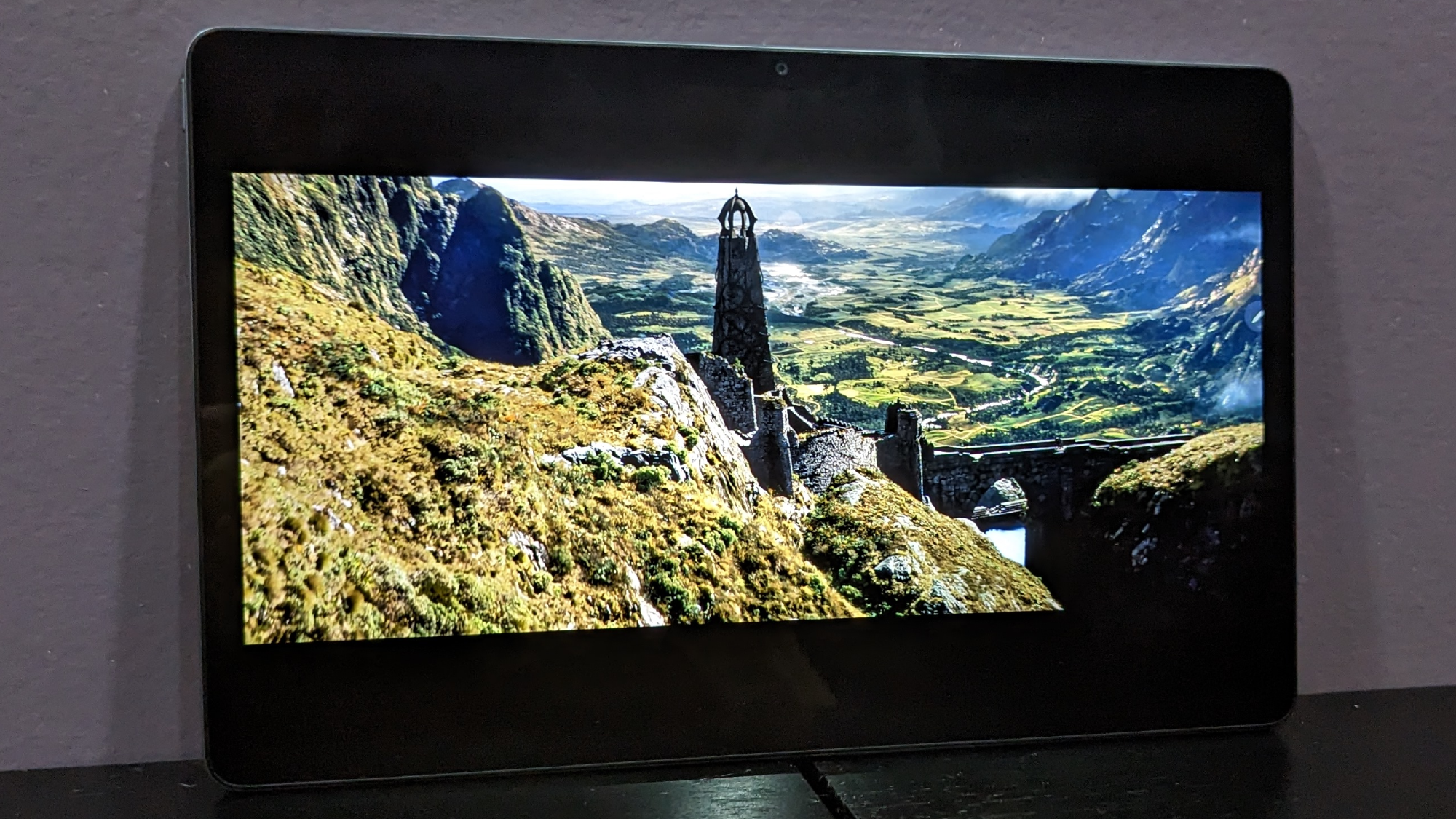
Android 13 was meant to launch on the tablet in Q1 2023, but now the official Android compatibility website claims it won’t come until Q3 2023. This could mean that we won’t see Android 13 on the tablet until Android 14 is already out, as Android 14 isn’t set to be available on the tablet until 2024.
Android 12 is nearly two years old, so there’s not much to talk about here, but I did run into some strange software issues on the P11 Pro. While testing the display, I suddenly couldn’t see Prime Video on my screen anymore. Instead a black screen took over the device, and even after logging out and back in, it wasn’t fixed until I restarted the device. I won’t throw blame at Lenovo for this one, as it could totally be on Amazon Prime Video’s side, but it was still pretty weird.
Bottom line
The Lenovo Tab P11 Pro (Gen 2) is a great mid range tablet alternative if you don’t want to settle for something that’s just functional, but also can’t be bothered to spend upwards of $500 on an iPad. With a gorgeous, high-resolution OLED display and an awesome speaker system alongside moderate performance (although it could be better), I walked away impressed by this affordable tablet.
But Lenovo needs to show this tablet more love on the software side. It’s been nearly a year since Android 13 launched, yet the tablet is still trapped on Android 12. Alongside poor longevity, its lower price point exists for a reason. If you want something at a similar cost and are willing to trade the OLED display for better performance and battery life, we recommend the OnePlus Pad. Otherwise, the Lenovo Tab P11 Pro (Gen 2) is a winner.
Source link
 notebook.co.id informasi dan review notebook laptop tablet dan pc
notebook.co.id informasi dan review notebook laptop tablet dan pc